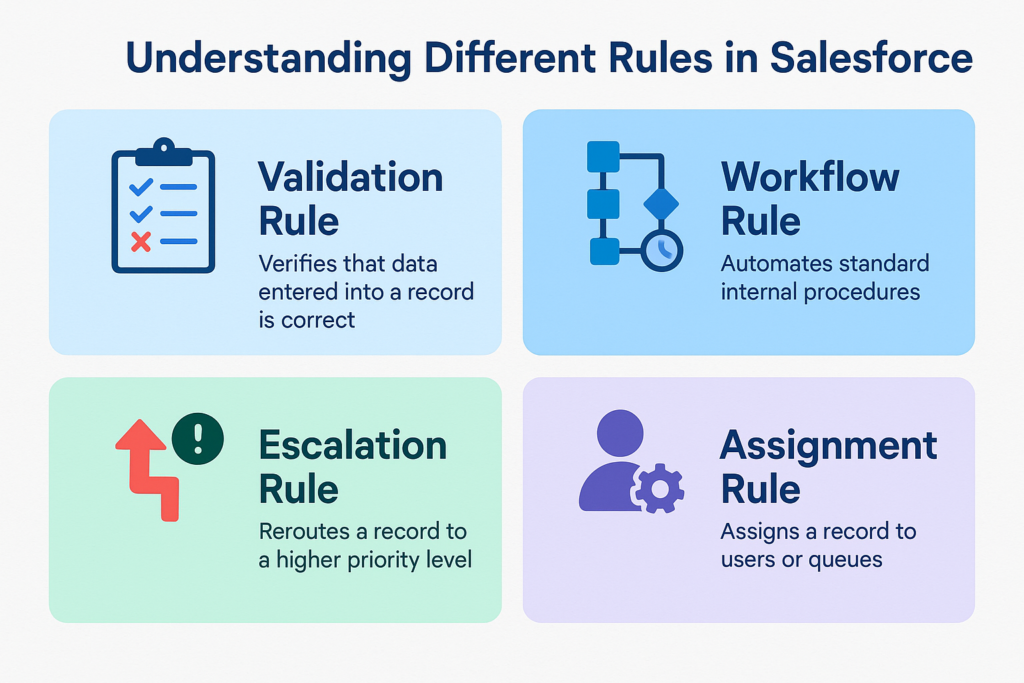Understanding Different Rules in Salesforce
Overview
Salesforce offers a variety of declarative tools to automate processes, validate data, and enforce business logic. Among these tools are different types of rules designed to improve data quality, streamline business processes, and ensure compliance with company policies.
Types of Rules in Salesforce
1. Validation Rules
Validation rules verify that the data a user enters in a record meets the standards you specify before the record can be saved. They prevent users from entering incorrect or incomplete data.
Example: Ensure that the Close Date is always in the future for Opportunities.
2. Workflow Rules
Workflow rules are used to automate standard internal procedures and processes to save time. A workflow rule is the main container for a set of workflow instructions. These instructions can be triggered when conditions are met.
Example: Send an email alert when a case is escalated.
3. Assignment Rules
Assignment rules automatically assign incoming leads or cases to specific users or queues based on criteria you define.
Example: Assign leads based on the lead source or region.
4. Auto-Response Rules
Auto-response rules send automatic email responses to lead or case submissions based on the record’s attributes.
Example: Send a ‘Thank you for contacting us’ email after a web-to-case submission.
5. Escalation Rules
Escalation rules automatically escalate cases if they are not resolved within a certain period. This ensures that important cases get the attention they need.
Example: Escalate high-priority cases not updated within 2 hours.
Comparison of Rules
The following table outlines the core differences between the types of rules in Salesforce:
| Rule Type | Purpose | Triggered On |
| Validation Rule | Ensures data accuracy and completeness | During record save |
| Workflow Rule | Automates tasks like email alerts or field updates | After record save (immediate or time-based) |
| Assignment Rule | Assigns records to users or queues | On record creation |
| Auto-Response Rule | Sends automated email responses | On lead or case submission |
| Escalation Rule | Escalates unresolved cases | Based on time criteria |
Conclusion
Understanding the differences between these rules is essential for configuring Salesforce efficiently. Each rule type serves a specific purpose, and together they help automate workflows, validate data, and maintain high service levels.

